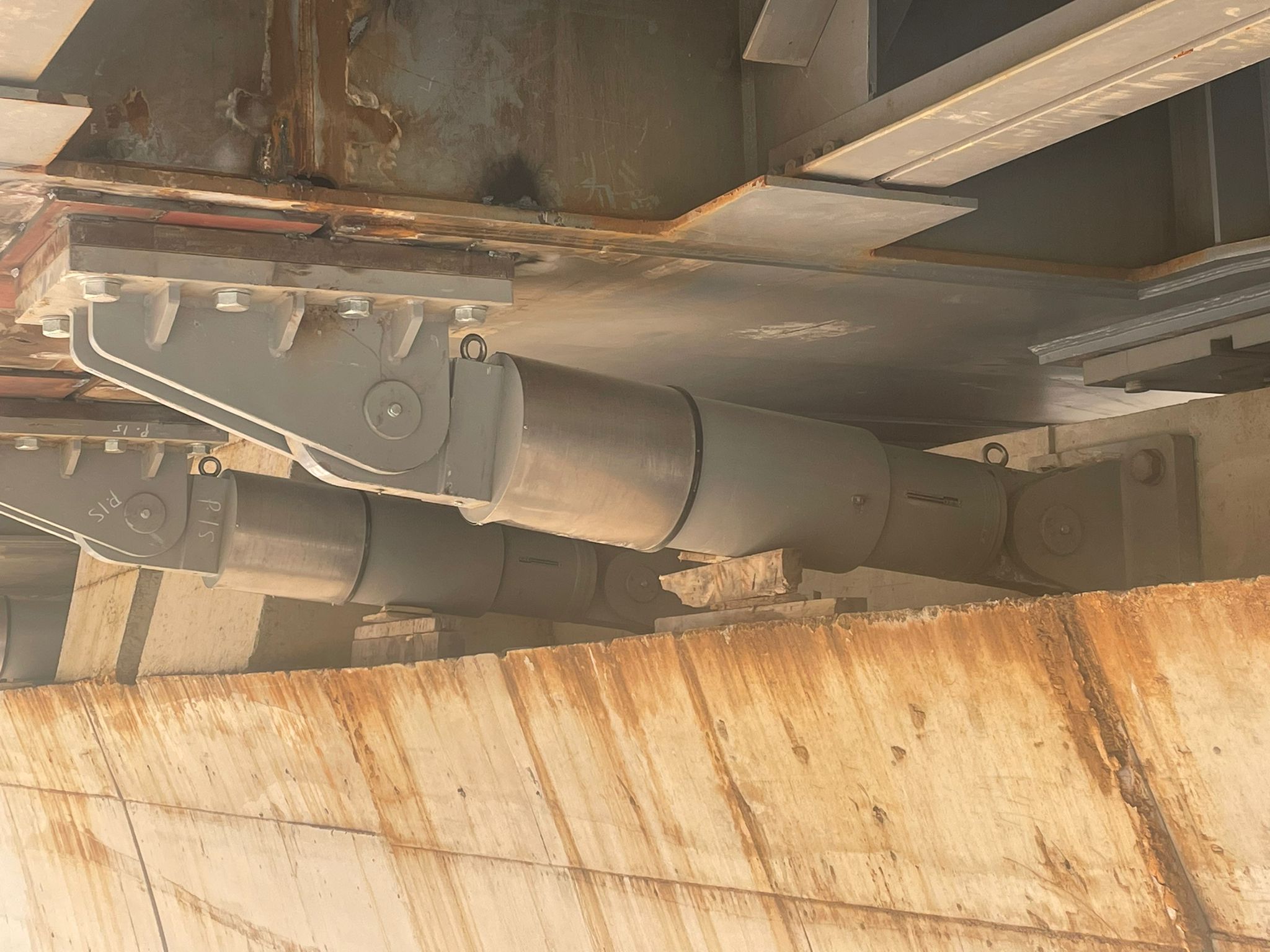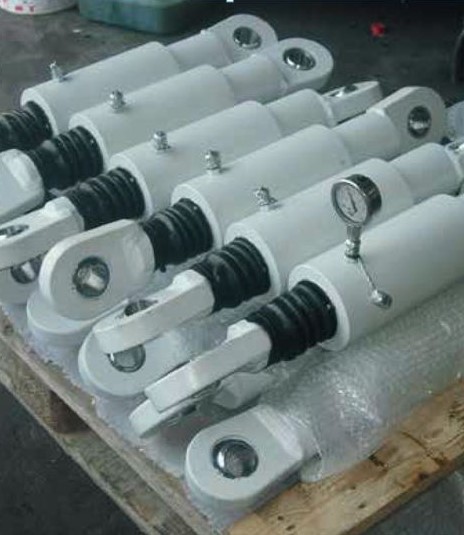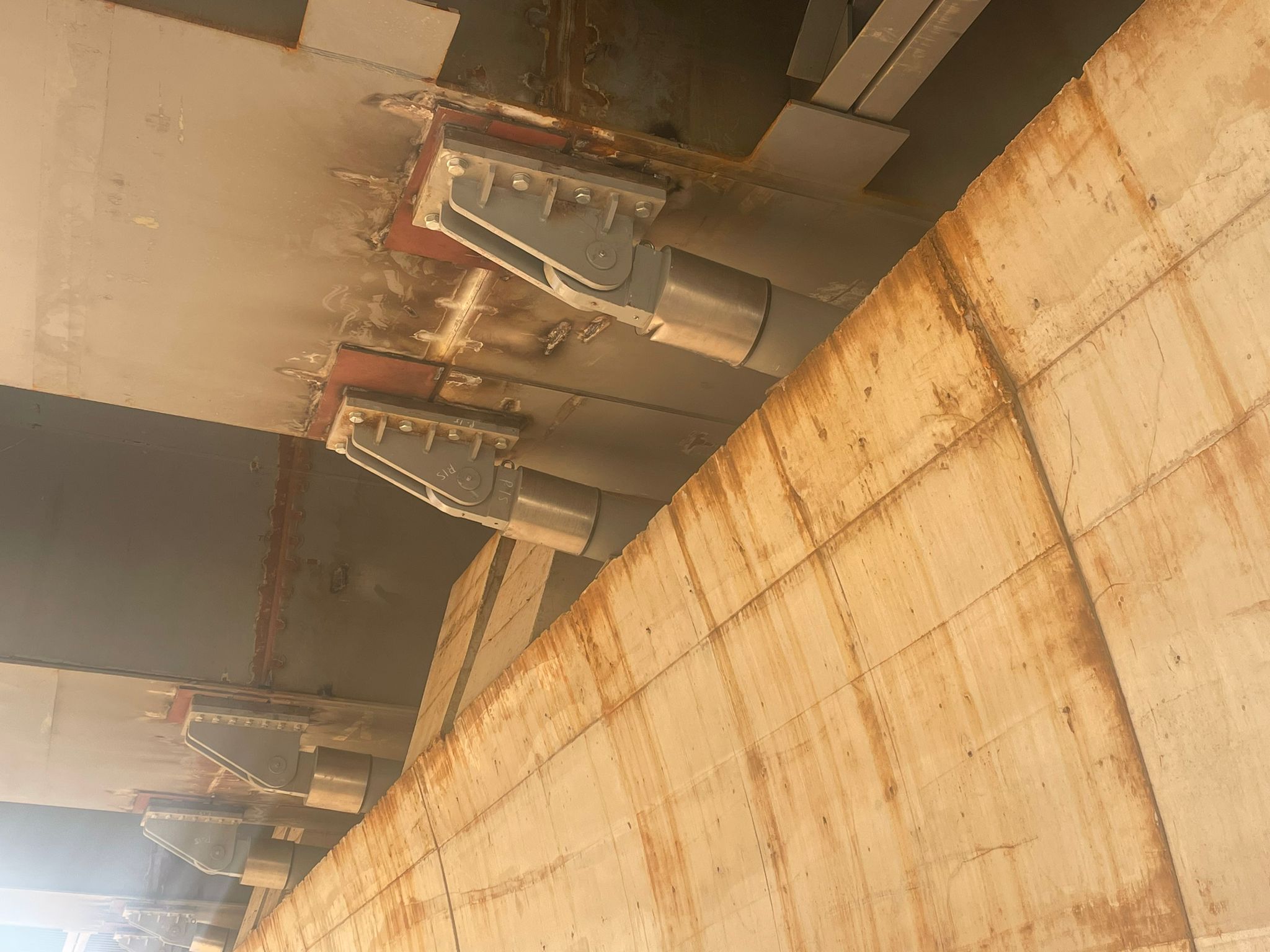Fluid Viscous Dampers

Fluid Viscous Damper
The MC and MCL type fluid viscous damper (FVD), is a displacement dependent device. The behaviour of the device depends on the speed according to the following law: F = Cva where: F = force C = damping constant v = velocity a = exponent (with values between 0.10 and 1.00) Its behaviour is symmetrical with respect to the intermediate position, both in terms of reaction and displacement. This type of functioning is due to the presence of a piston inside the steel liner that divides two chambers containing hydraulic fluid and connected via a calibrated valve. Two spherical hinges connect it to the structure, allowing rotation around any axis. The device acts like a connecting rod, only able to transmit forces along its axis.


